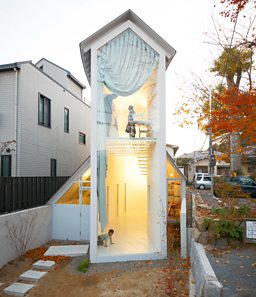⚡ Troubleshooting Power Outages in Your Property (Okinawa)

If the power suddenly goes out in your property, don’t panic, most cases are caused by a tripped breaker or too many appliances running at once.
Follow this guide to safely check your breakers, identify the cause, and know when to contact your electric company or Saki Corporation.
🔌 1. Check if It’s a Full or Partial Outage
🔹 Step 1: Look Around Your Home
Are all rooms without power, or only certain areas?
If only one room is affected → it’s likely a tripped branch breaker.
If the entire house is dark → check the main breaker or area-wide outage.
🔹 Step 2: Look Outside
-
Check if streetlights or neighbors’ houses are also dark.
If yes → it’s likely a regional power outage.
If not → the issue is inside your property.
💡 Have a flashlight or phone light ready, never use candles for safety.
⚙️ 2. Locate and Inspect the Breaker Box
🔹 Location
The breaker panel (ブレーカー) is usually found:
Near the entrance door, hallway, or balcony area.
It typically looks like a gray or white box mounted on the wall.

🔹 Main Breaker Types
| Breaker Type | Purpose |
|---|---|
| メインブレーカー (Main Breaker) | Controls all power in the property |
| 漏電ブレーカー (Earth Leakage Breaker) | Shuts off during electrical leak for safety |
| 子ブレーカー (Branch Breakers) | Controls individual rooms or circuits |
⚡ 3. If All Power Is Out
🔹 Step 1: Check the Main Breaker
Open the breaker box and look at the main switch (メインブレーカー).
If it’s switched down, turn off all branch switches first, then lift the main breaker up to reset.
Turn branch switches back on one by one.
⚠️ If it trips again immediately, unplug all appliances and try resetting once more.
🔹 Step 2: Check for Power Supply from the Utility
If resetting doesn’t work:
It may be an Electric Power Company issue.
Confirm by checking outage notice
💡 During typhoons or maintenance, temporary area-wide outages are common in Okinawa.
🔋 4. If Only Some Areas Are Out
🔹 Step 1: Check the Branch Breakers
Identify which switch is turned off (lowered position).
Lift it back up to restore power to that area.
If it trips again → the connected circuit is overloaded.
🔹 Step 2: Reduce Appliance Load
Unplug or turn off:
Microwaves, toasters, or kettles running simultaneously
Air conditioners and dryers on the same circuit
High-wattage U.S. appliances connected via voltage converter
⚠️ Using multiple foreign devices (110V → 100V converters) can easily overload Japanese circuits.
🔹 Step 3: Check for Extension Cords
Avoid daisy-chaining or using multiple power strips, this increases fire risk.
🌐 5. Check for Overuse of Electricity
In Japan, the maximum electricity capacity for standard apartments is often 30–40 amps, much lower than in the U.S.
| Appliance | Typical Wattage |
|---|---|
| Microwave | 1000W |
| Air Conditioner | 800–1200W |
| Hair Dryer | 1200–1500W |
| Washing Machine | 500W |
| U.S. Toaster or Rice Cooker | 1200–1500W |
🔹 Signs of Overload
Lights dimming when appliances turn on
Breaker trips repeatedly when multiple devices are used
💡 To avoid overload, spread appliance use, for example, don’t run the microwave, AC, and dryer at the same time.
🪫 6. Power Outage Due to Electric Company
If your building and neighbors are also affected:
Wait for the power company to restore service.
Unplug sensitive electronics (computers, TVs) to prevent surge damage.
Keep refrigerator doors closed to preserve cold air.
⚠️ During typhoon season, expect short power interruptions. Keep a flashlight and power bank ready at all times.
🔦 7. What to Do If Power Doesn’t Return
After checking breakers and unplugging appliances:
Confirm that the main breaker is ON.
If there’s still no power, or the breaker keeps tripping, contact us by submitting maintenance request form.
Do not attempt to open or repair electrical panels yourself.
🧰 8. Preventive Tips
| Situation | What to Do |
|---|---|
| Using multiple foreign appliances | Use only one high-wattage device at a time |
| During typhoon | Unplug sensitive electronics |
| Monthly check | Test breaker switches and labels |
| If breaker often trips | Report — circuit may need inspection |
Comments
0 comments
Please sign in to leave a comment.